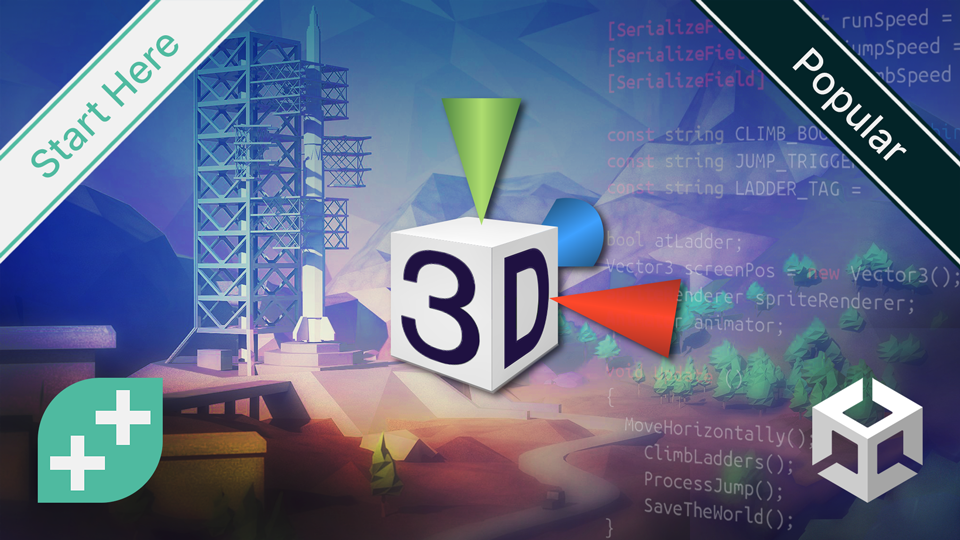There are some game design elements you don't want to forget, because if you miss them, your game could lack the polish it needs. The topics I discuss in this blog are varied but essential. Although this isn't a complete checklist of things to include in your games, it's a good reminder of elements such as parallax backgrounds, color schemes/palettes, color balance, resolution options, and layers and depth.
Parallax Backgrounds
Parallax Backgrounds, in 2D games, give the illusion that you are in a real world. Parallax shows up, especially in side-scroller games, when a character is moving.
The closer an object is to a character, in the foreground, the faster it goes by, as the character moves, and the farther off in the background an object is, the slower it moves, as the character and camera move.
This effect is achieved in 2D games, using object oriented coding.
Color Schemes & Color Balance
Color balance and color schemes are very important. You can make people take notice of specific objects and characters by using matching color schemes or bright color schemes. For instance, if there's an object that you want a player to pick-up and use, you can make it a bright color or use a bright highlight around it. If you are making a mystery game and you want to be subtle about hints, you can use slight hints with colors to draw the player's eyes to that object.
You can also use colors to focus the players on characters and objects, so they see the landscape and the character. For instance, I could put a red plaid shirt on my main character, and then, I could put hints of that same spectrum of red in some of the leaves on the trees. This would achieve what I call color balance and draw the player's eyes to the whole scene and not just the character, and in turn, the red shirt would make the character stand out against the background.
Another element about colors, which I would like to discuss is color meanings and the moods they convey. Red, orange, and yellow can convey warnings, and dark colors can be used to convey sadness.
On the other hand, depending on how the colors are used, bright reds and bright blues can be used to convey total joy, and yellow could be used to convey a joyous, sunny day!
Resolution Options
Even in this world of ever-changing technology, we have to remember that there are still old computers being used to play our games, and on the other hand, we have to remember that there are new computers with new resolutions and high resolution monitors. We need to offer a variety of resolutions in our games, such as 1080 PX., 2K, 4K, etc.
If we only include high resolutions, players with older PC's may not be able to play our games, because the higher the resolution the more GPU power and RAM are required to process them. Older PC's don't have as much RAM and GPU power!
On the other side of the coin, people with new systems may feel that the resolution isn't high enough for their 4K displays, so we need to include higher resolution settings for them. This will give them a better player experience!
Layers & Depth
When you are making 2D games, you'll want to add lots of layers in the drawing program, so that it adds depth to your drawings. Remember to add shadows and highlights, to each layer, and then, merge the layers, before exporting the file and bringing it into the game engine.
You really need, at the very least, a background layer, mid-ground layer, and fore-ground layer in your 2D game, so that it gives it that professional look. You don't want dozens of layers in the game engine, in each scene, or it will make the PC or console process the levels too slowly and may even make the game crash. Try to limit how many layers you add to each scene but add enough so that it gives it depth.
Courses that I Recommend!
I highly recommend these two GameDev.TV courses, for beginners, who are getting into game development.
1). The Complete C# Unity Game Developer 2D Online Course! This course is taught by the ever intrepid, awesome, Rick Davidson!

2). The Complete C# Unity Game Developer 3D Online Course! This course is also taught by the awesome, Rick Davidson!

I've enjoyed talking to you about these important elements of game design! Start your game engines! See you next blog!
About the Author
I’m Elizabeth R. Laurie, and I’m studying the GameDev.TV courses! I love to, learn!
I have always been fascinated with animation and video games, and I plan to use these forms of media to make clean, family oriented, entertainment. I also plan to revolutionize education, and make it fun for everyone!


